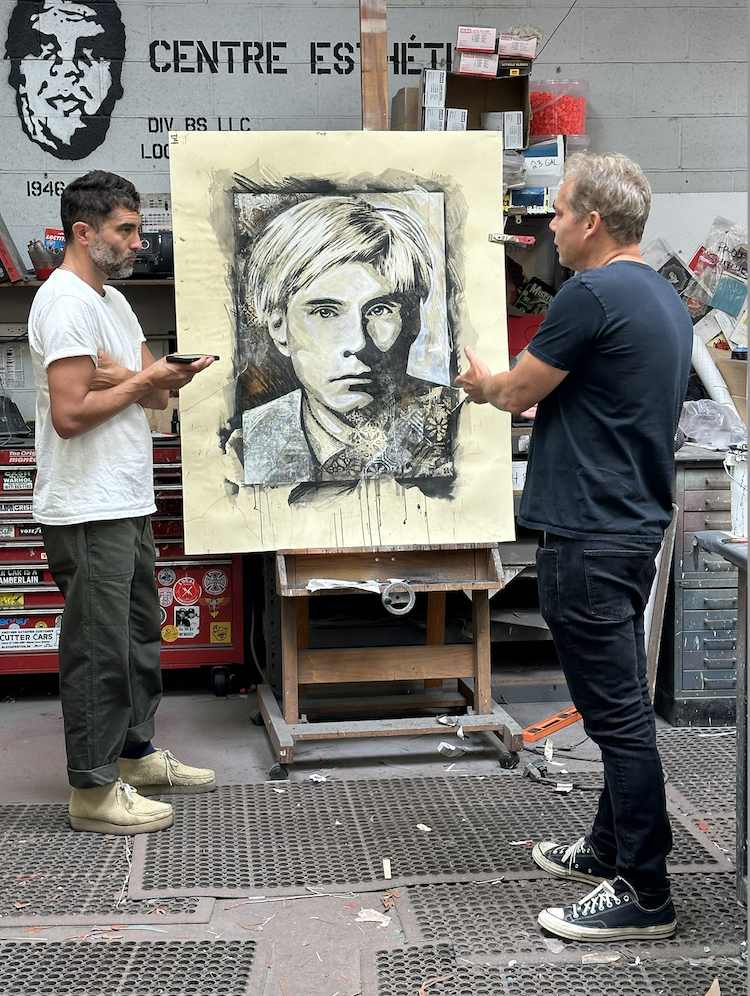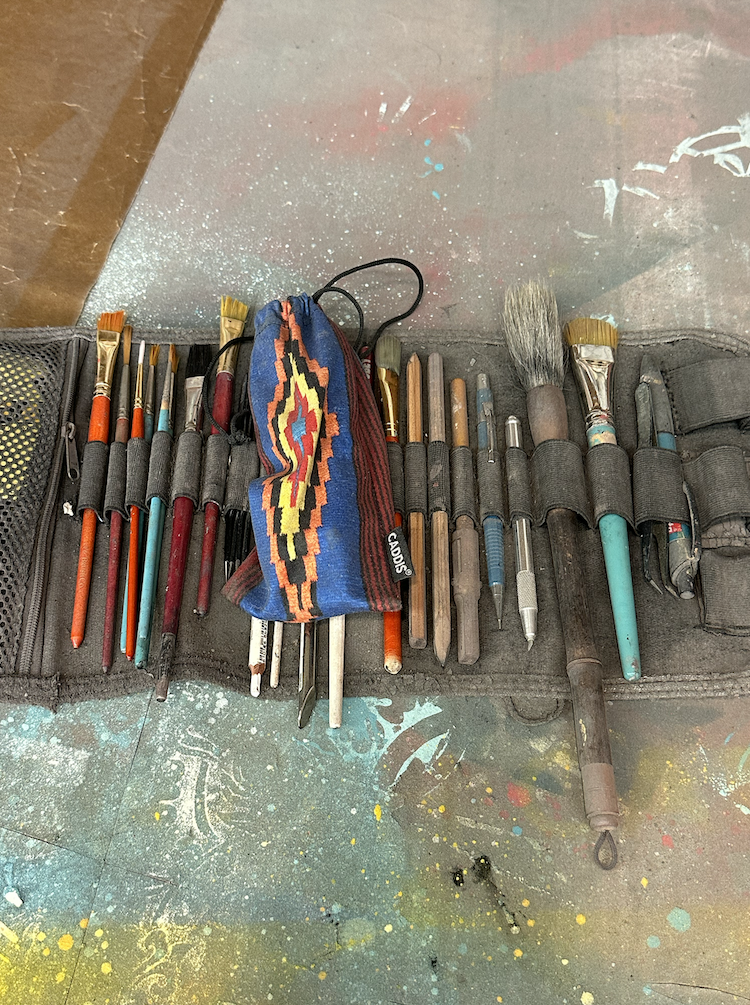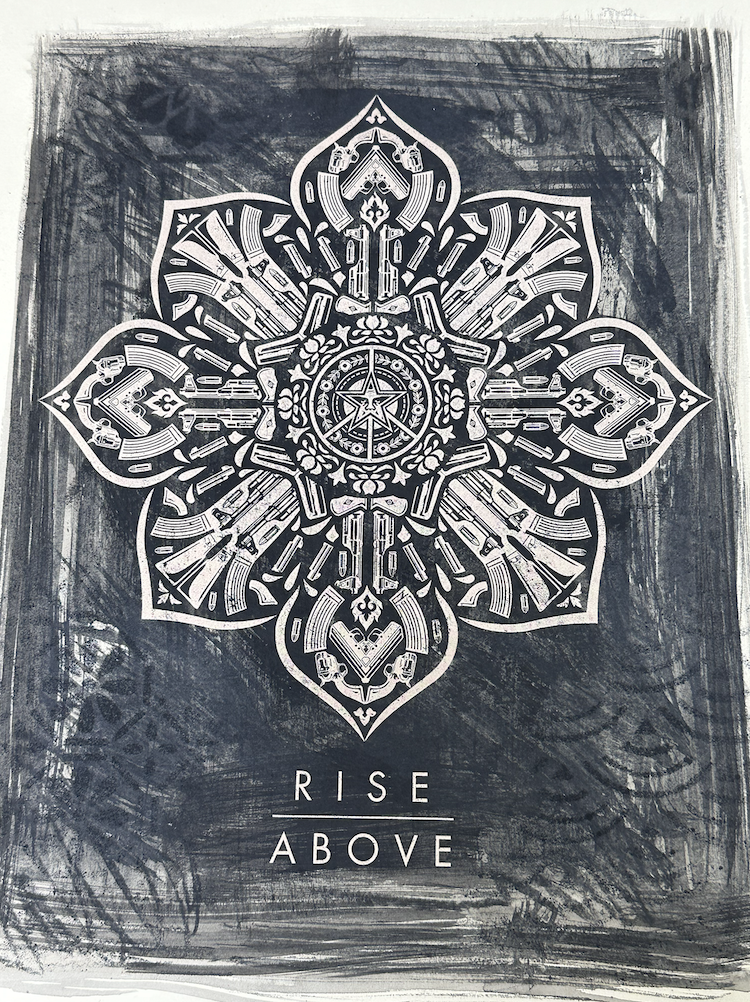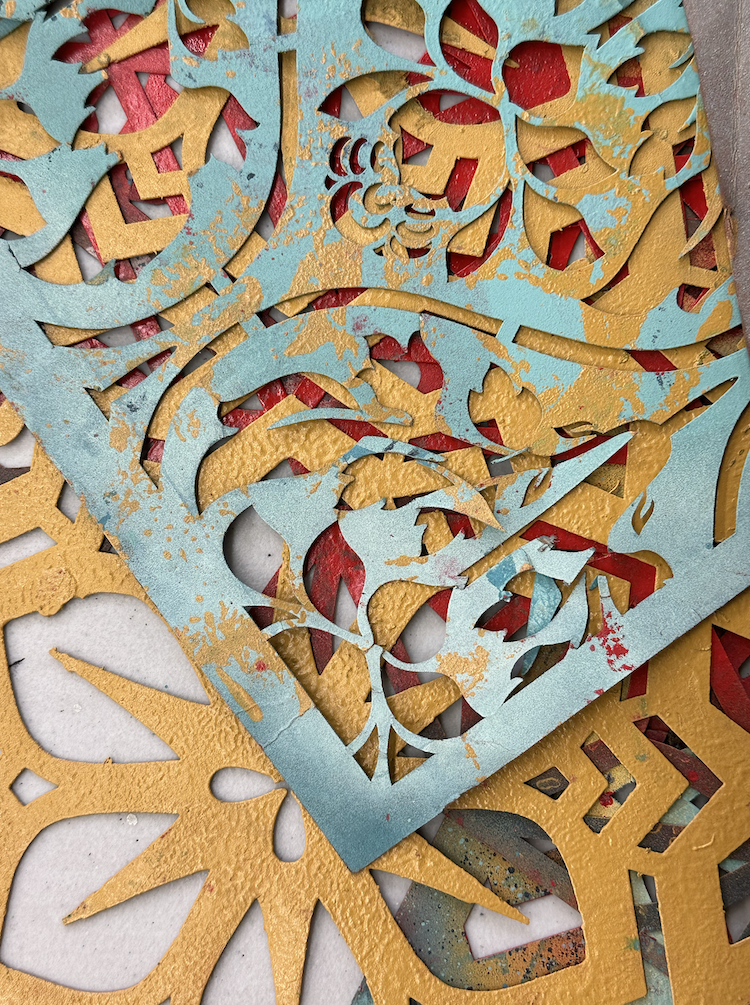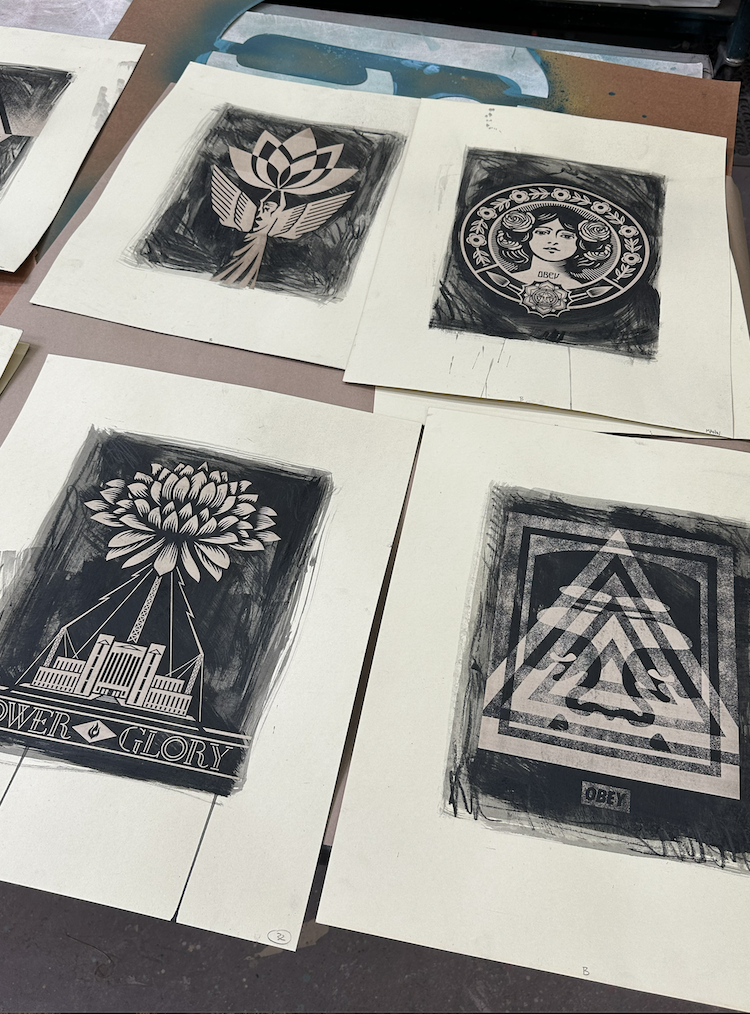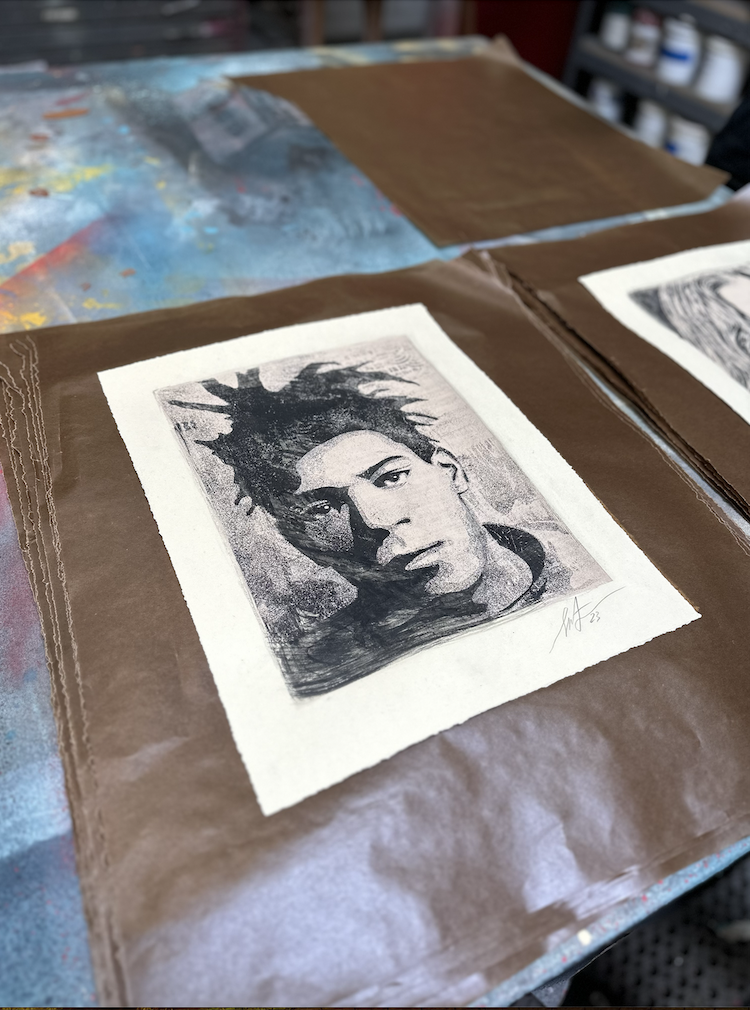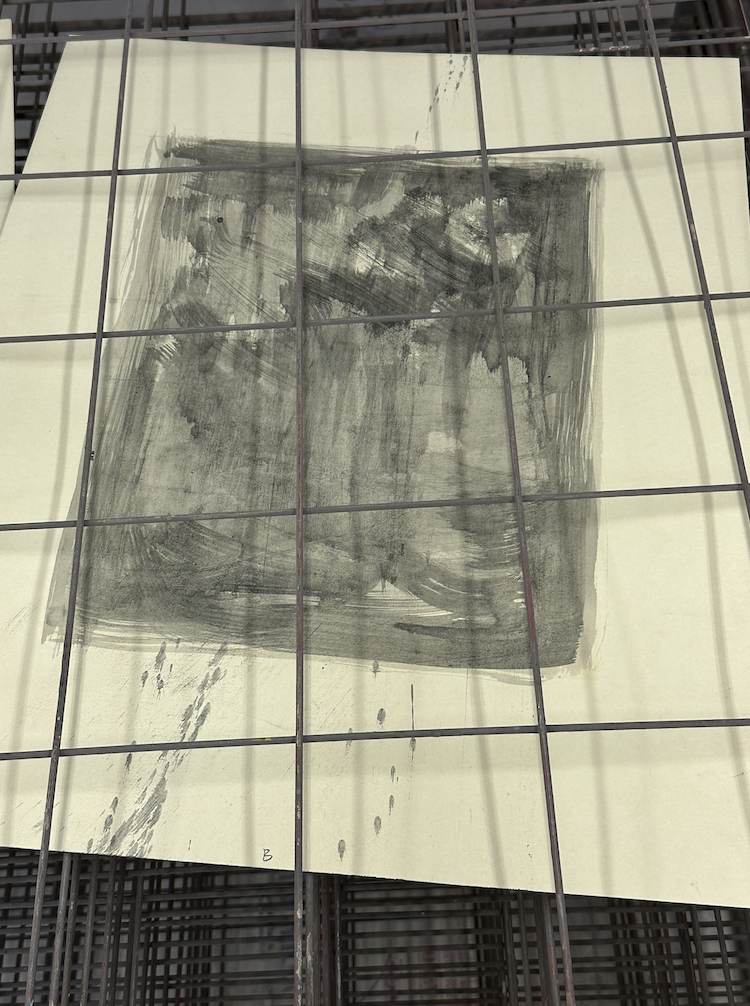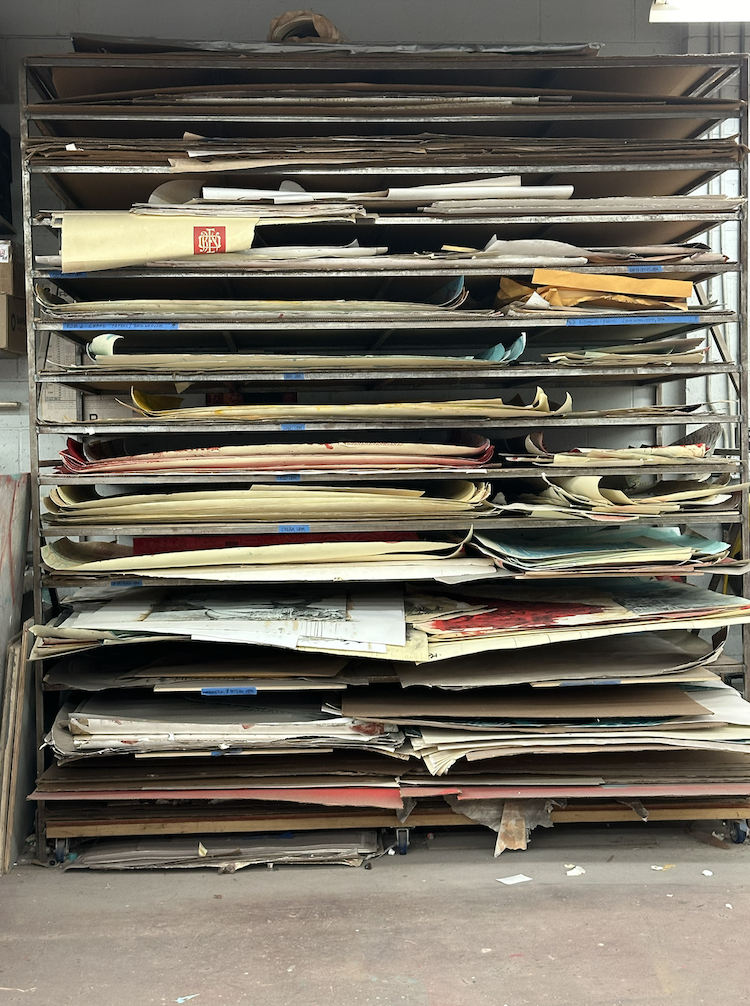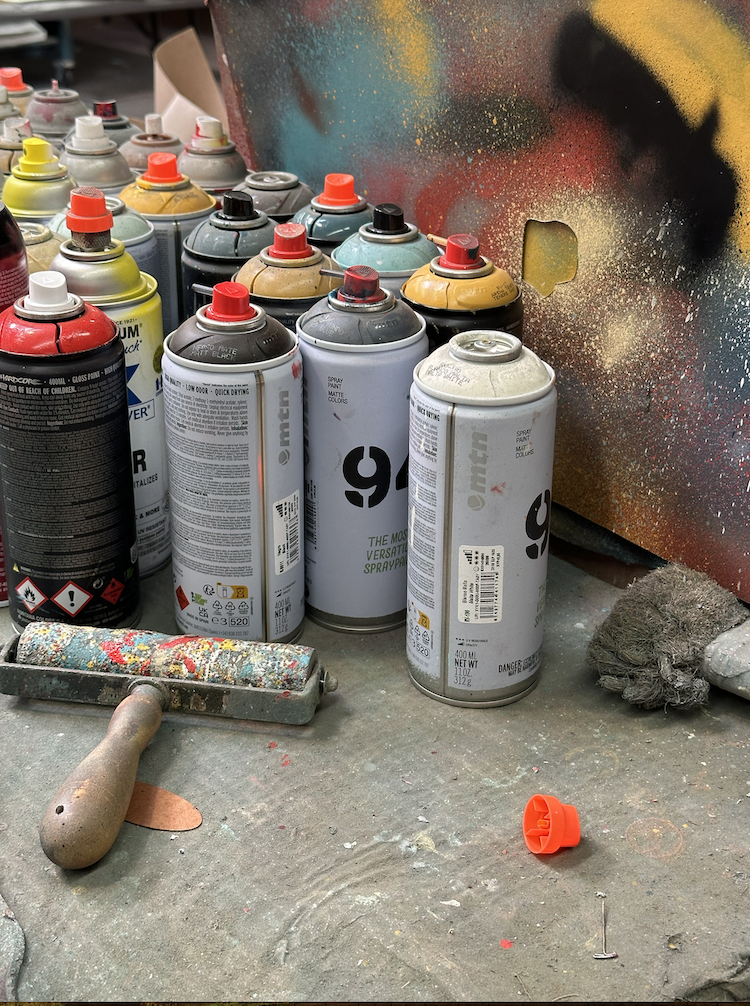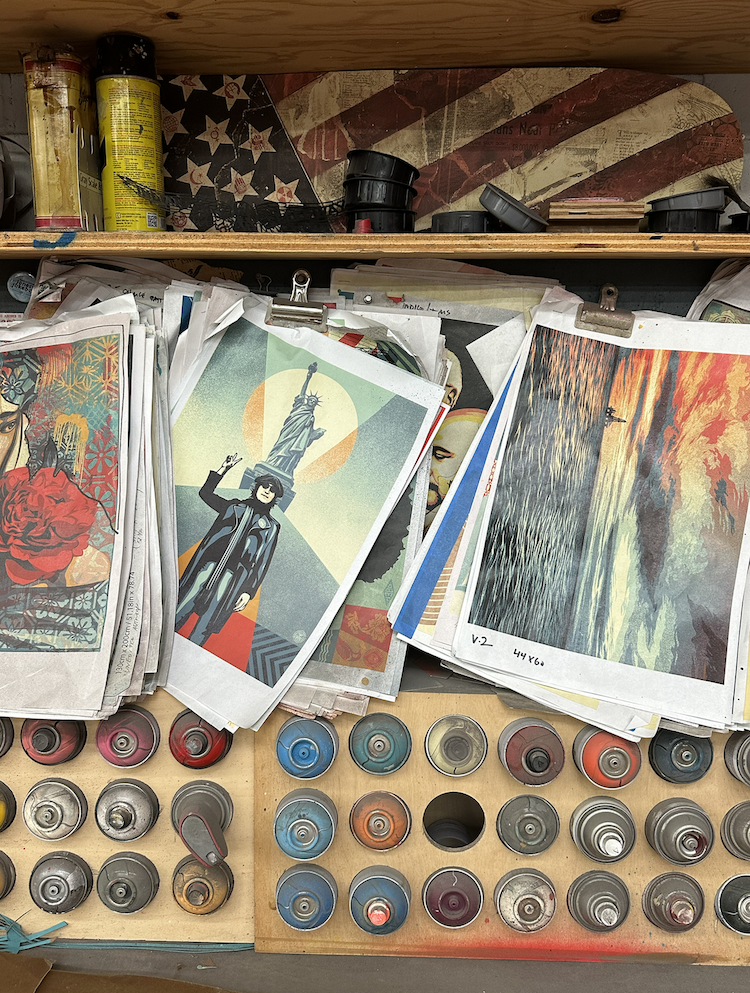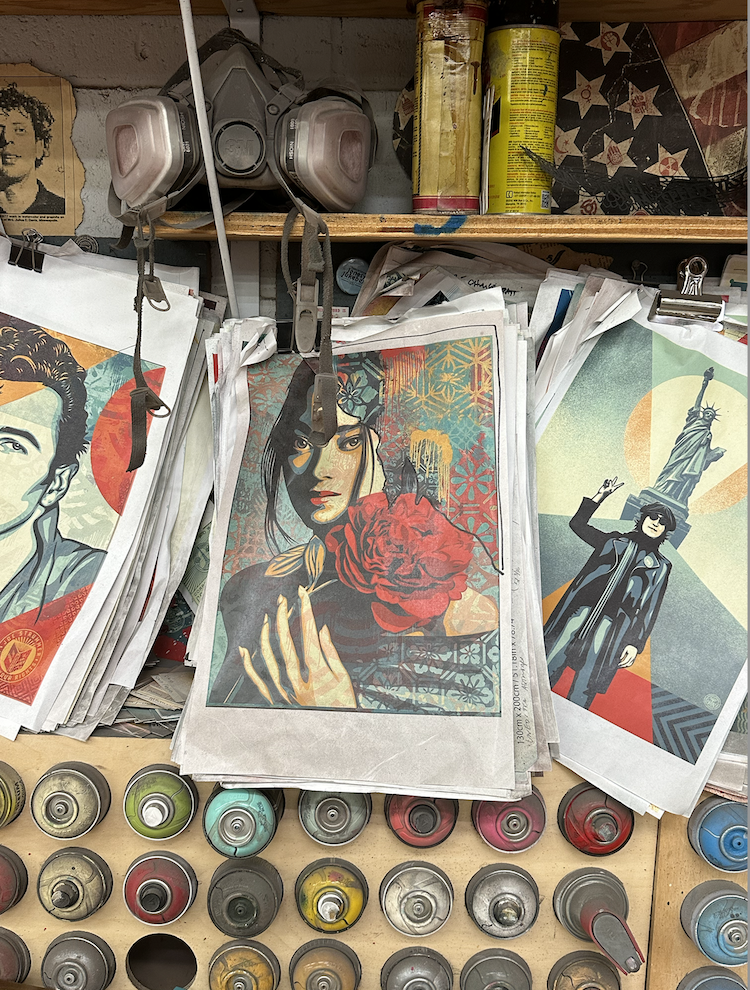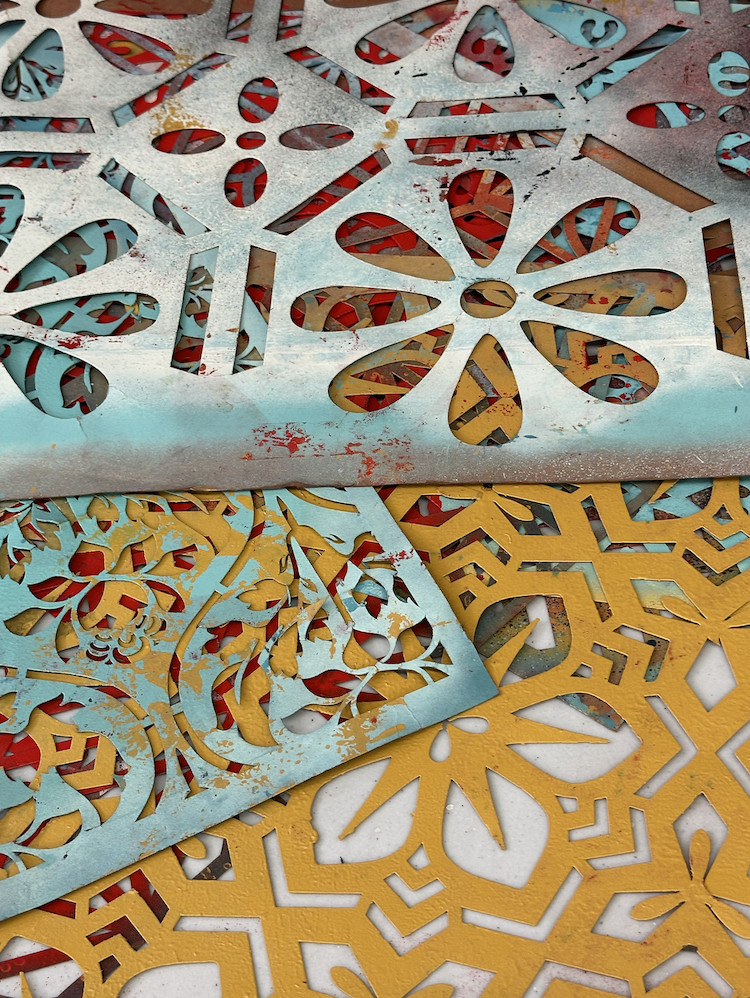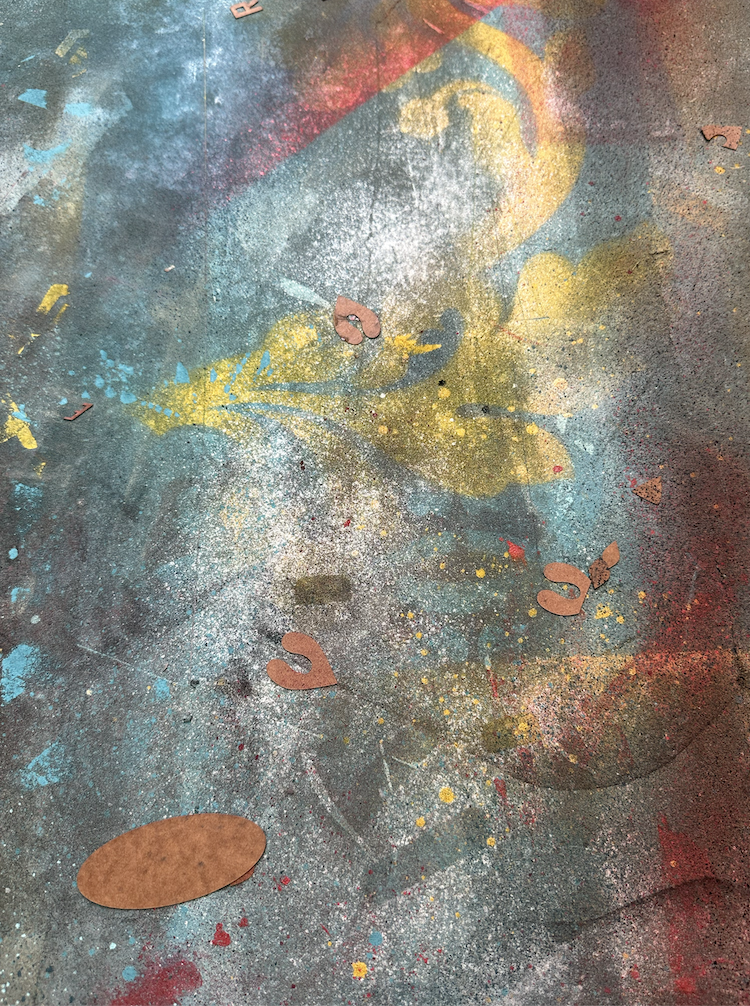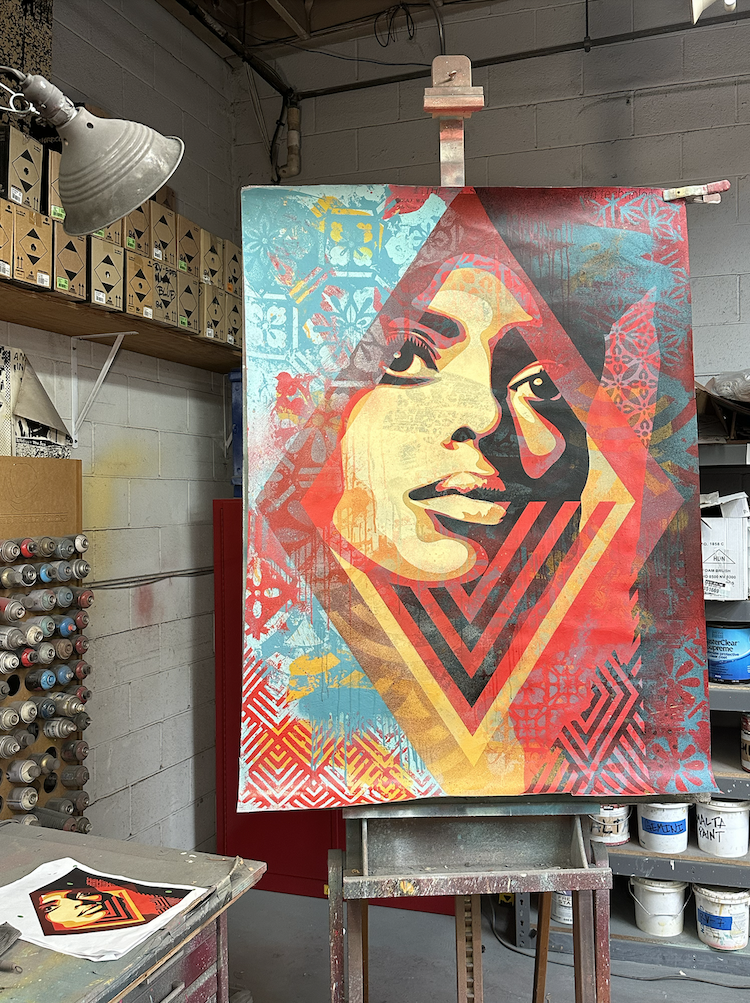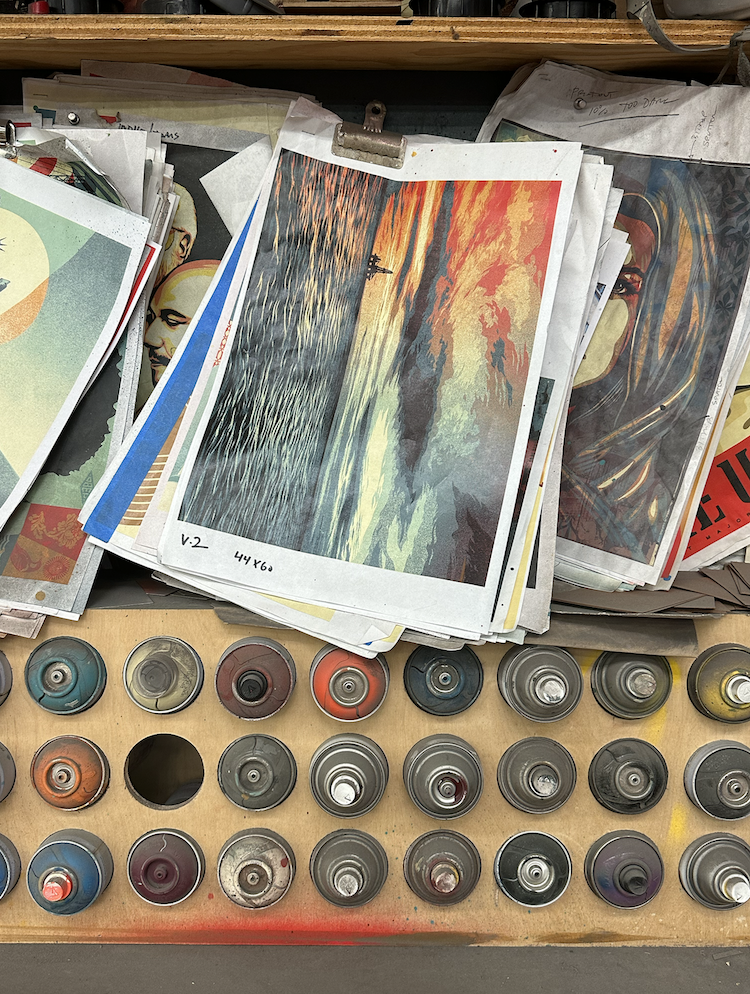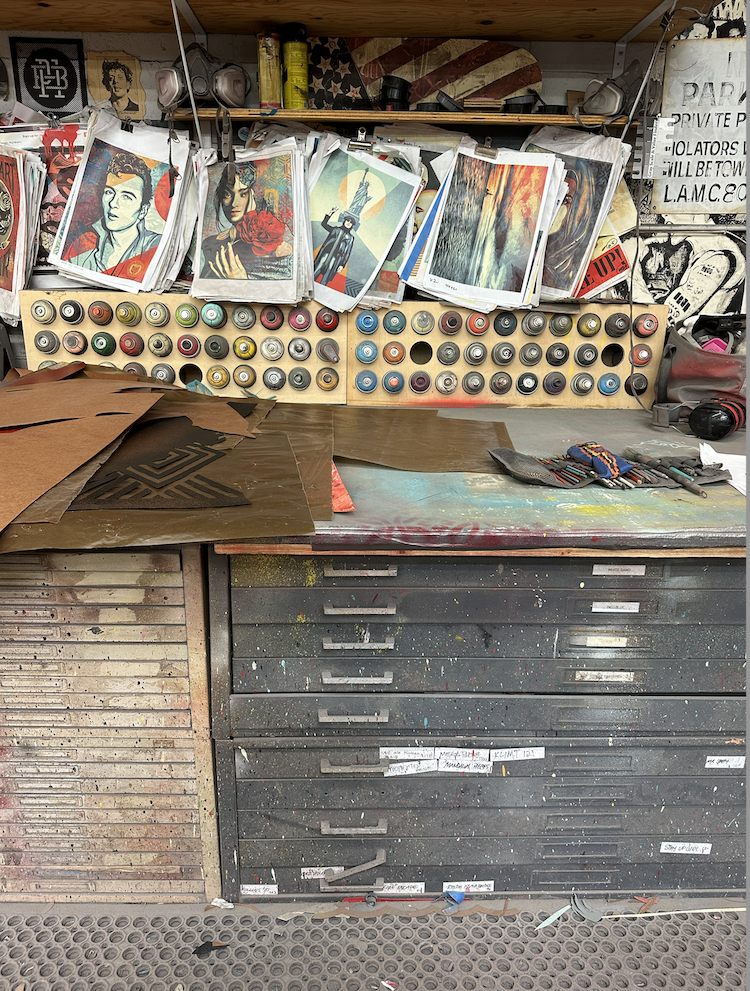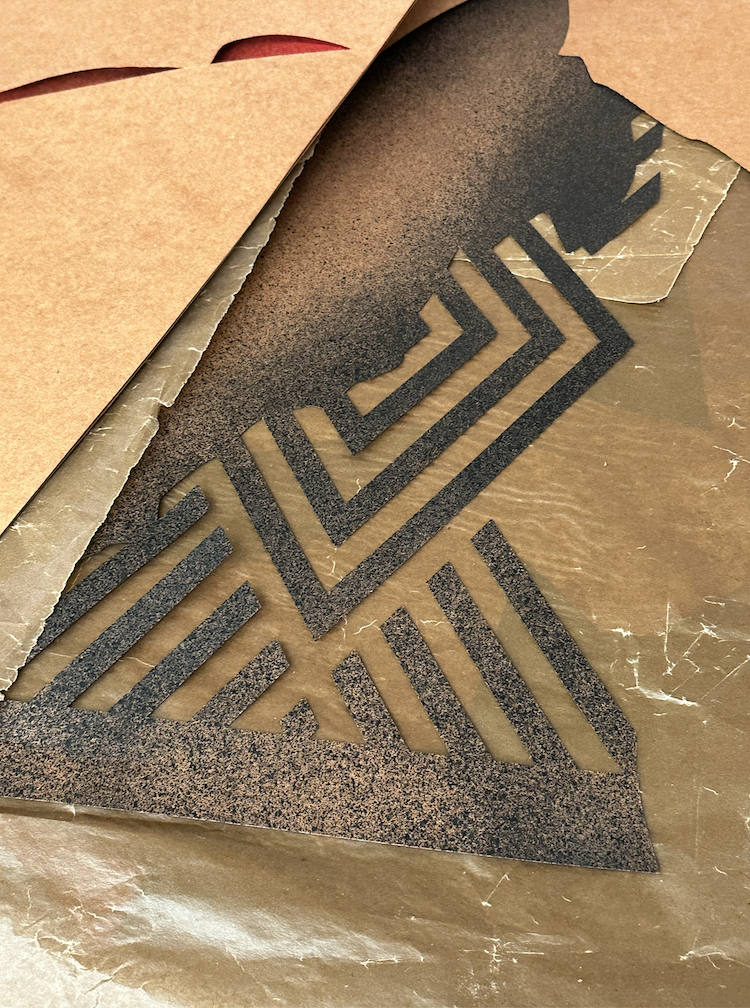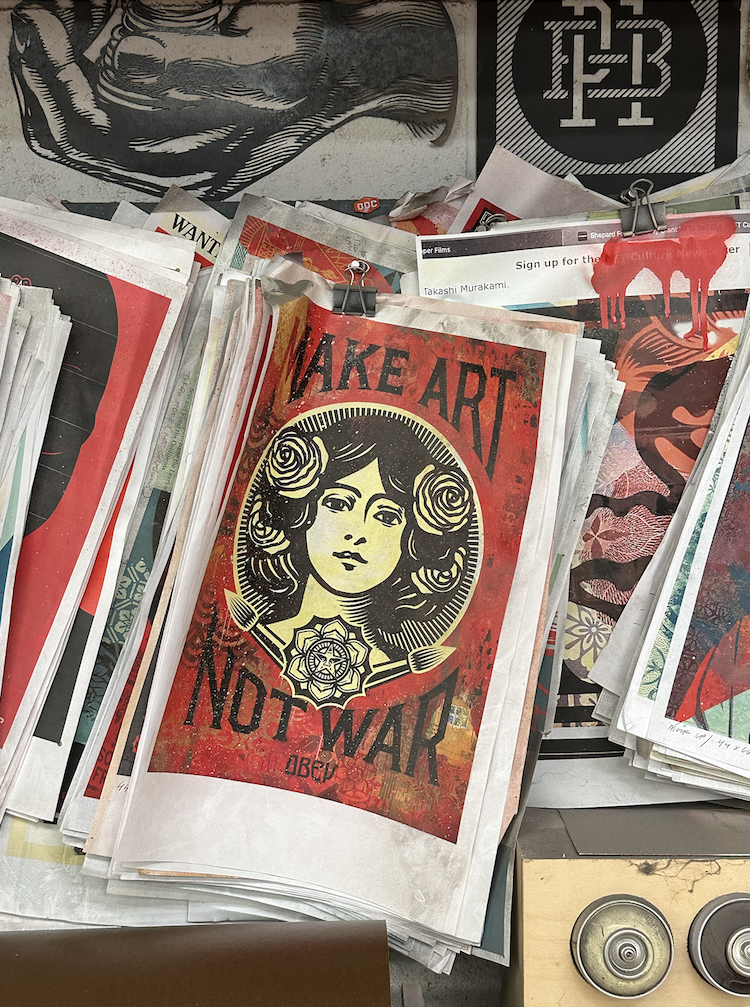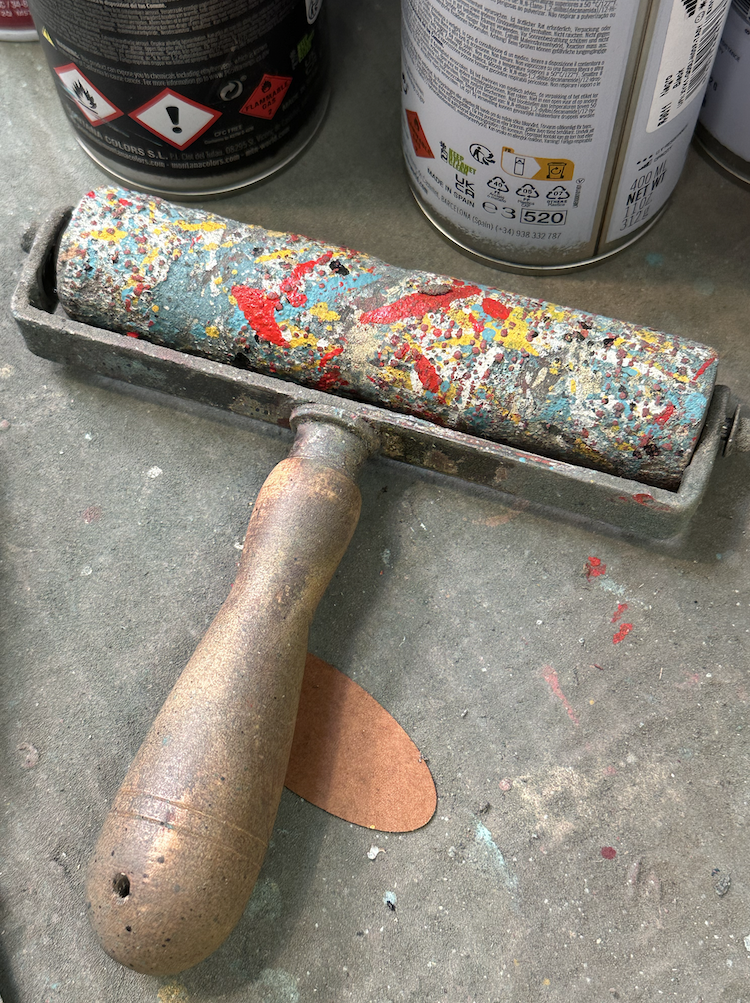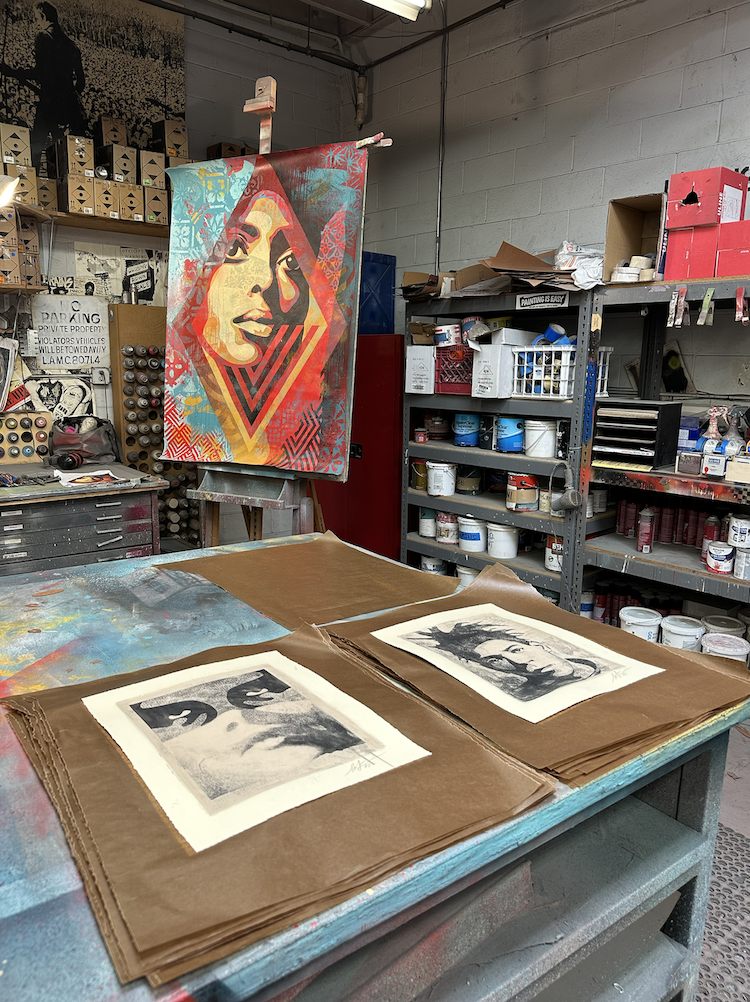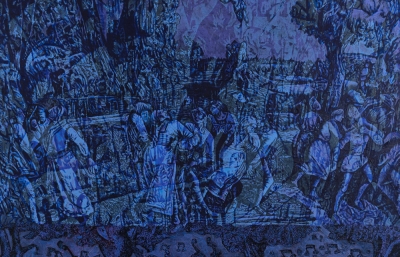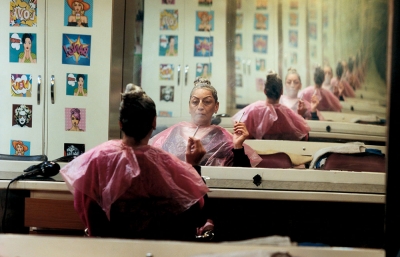In my studio and works, I think that a lot of the different aesthetic directions that I've been developing for the last five to six years came when I expanded my color palette and got more sophisticated about how I was weaving in typography patterns and geometric elements. There's a real joy in exploring how to make all those things function together symbiotically.
But then, as I feel like I've refined it and refined it, it starts to feel like it could be getting into a cul-de-sac and just redoing the same things. And there are plenty of artists that have more or less redone the same thing their whole career, and it was appealing because it was a good formula, a good technique, But I get a little bit restless with that and go, "Okay, if I've got 10 different variables I'm excited about, how can I include however many of those in a way that functions harmoniously and that people might be expecting? But then what's the new twist I'm adding?"
So all of a sudden, there's a new variable. When I look at a lot of my old work, especially when I started to hit my stride with the Russian Constructivist-inspired stuff, it was like, okay, you're going to see a really stark, bold, stylized, black and white image of a person or a thing. You're going to maybe see a star, an exclamation point, an arrow, and you're going to see red and black, and that could be the max ingredients you'd likely see. And then, as I felt like I had refined that to the point of feeling like I could do it in my sleep and it was a little dry, and that those pieces worked well on the street because they took on a little bit of the organic, chaotic charm of the environment, then what do I do to move those into the gallery?
And then in the studio, I started to play around with rips, drips, and collage, and the interaction between the image that projects to the front—that's really bold; that's instantly read: not losing a lot of things, just adding. I do think there's the possibility of getting too ambitious with a number of ingredients and things becoming too muddy and chaotic. So sometimes I'll say, "Oh, I have to step back and decide what I'm going to not include and what I am going to include." But it's always a back-and-forth experiment.
So that process becomes a result that you never would've expected,happening organically right under your nose all the time. But throughout my career, there's been a very intentional process of looking at the things that I think work visually and conceptually and then expanding based on those principles, trying a new thing, and experimenting. And then you say, “Ah, now that one enters the toolkit now! That one, I thought, was really great when it was new and exciting!” —Shepard Fairey
This article was originally published in our WINTER 2024 Quarterly. All photography by Kim Stephens

